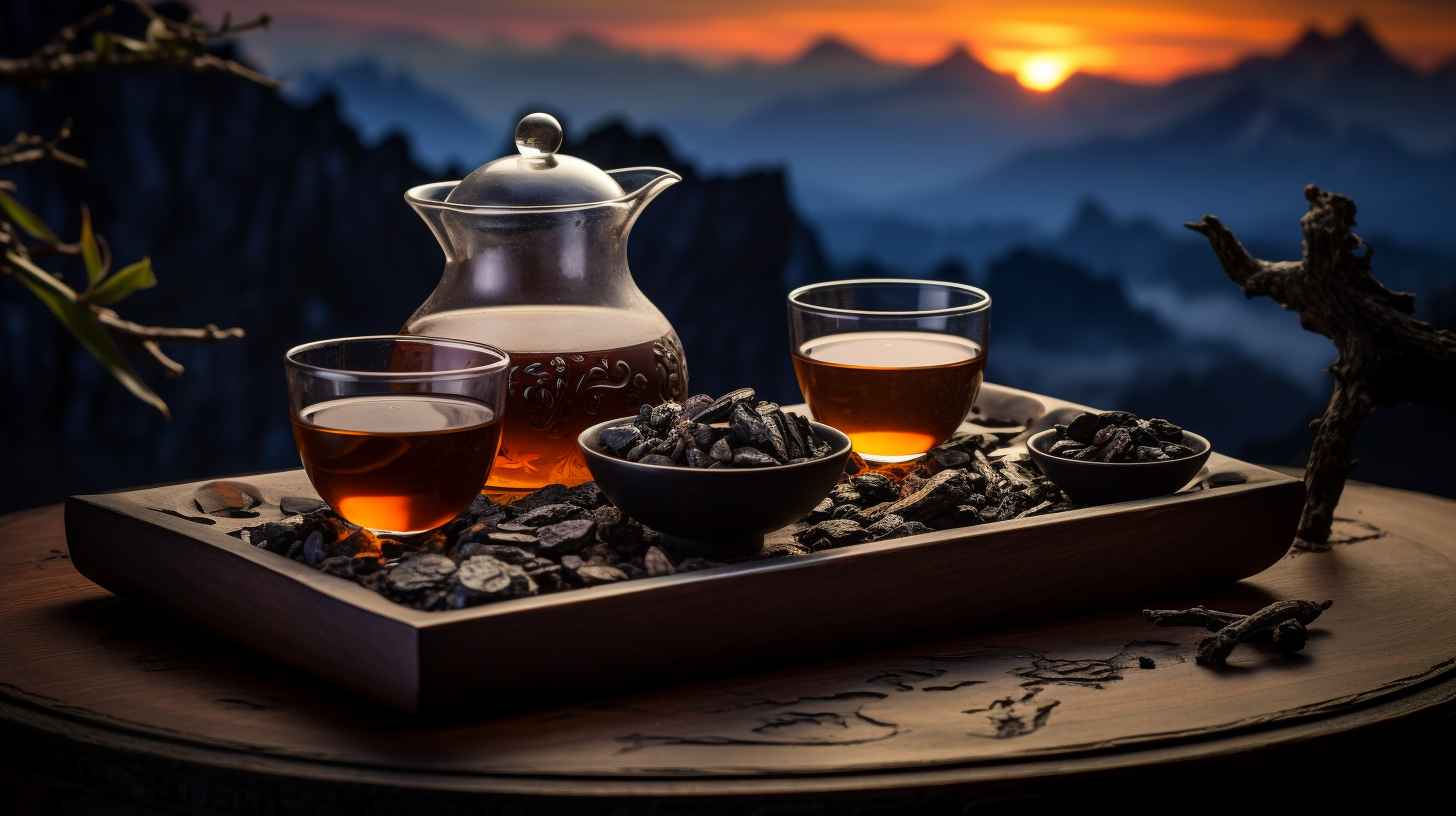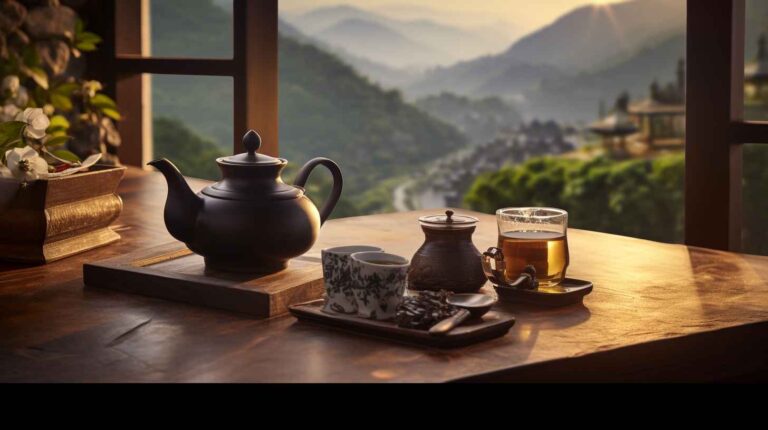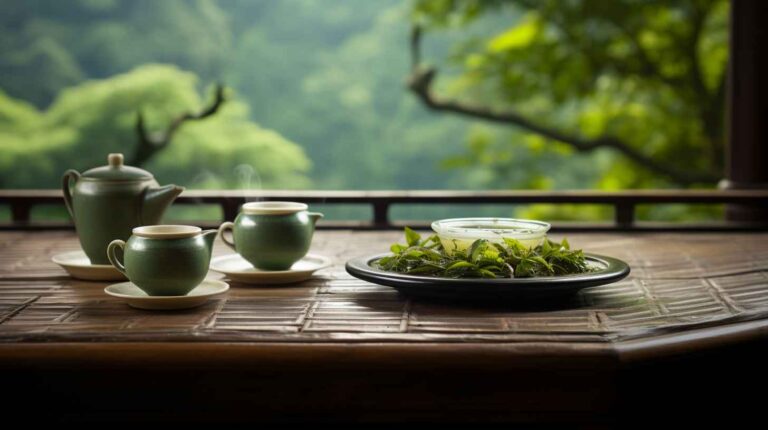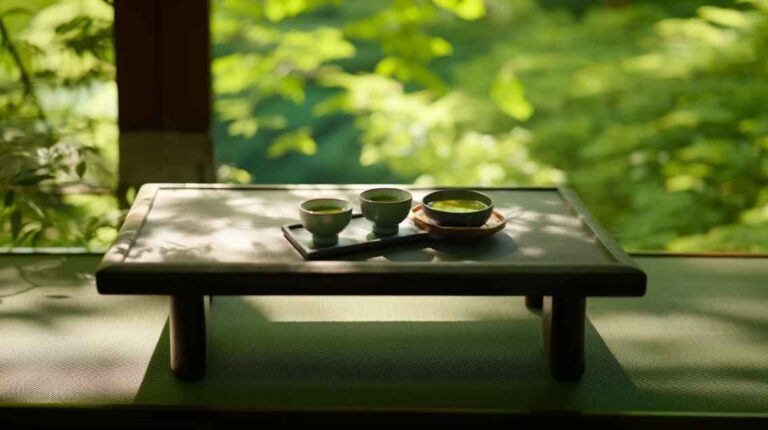Pu’erh Explained: From Ancient Chinese Cellars to Modern Cups
Introduction
Within the diverse tapestry of teas that the world offers, Pu’erh stands as a magnificent artwork, drawing gazes and evoking deep admiration. Its multifaceted history, intricate fermentation journey, and dynamic flavor palette make it an epicurean’s delight. For those who might be taking their first sip or for those who have been long immersed in its depths, the narrative of Pu’erh, transitioning from ancient Chinese cellars to the elegant porcelain of today, is truly intriguing. In this article, the chapters of this story will unfold, allowing a deeper dive into the world of Pu’erh tea.
Origins of Pu’erh: The Ancient Chinese Legacy
The majestic mountains and lush forests of China’s Yunnan province are the cradle from which Pu’erh springs. This province, renowned for its unparalleled biodiversity, is home to some of the most ancient tea trees on the planet. Their gnarled trunks and sprawling roots are silent witnesses to millennia of history.
Delving into the annals of time, Pu’erh’s tale commences during the reign of the Han Dynasty, over two millennia ago. The tea’s name is an ode to the Pu’er city, a hub of tea commerce in those times. Interestingly, this wasn’t just a beverage; it was a form of currency, a medium of exchange. Merchants and traders traversed the rugged terrains of the Ancient Tea Horse Road, a labyrinthine network connecting the spiritual heights of Tibet with the bustling markets of Southeast Asia.
The Yunnan region’s gift of a perfect climate, with its misty mornings and nutrient-rich soil, forms an environment that’s almost custom-made for tea cultivation. The millennia witnessed not just the growth of the tea but also the refining of the artistry associated with Pu’erh. This painstaking refinement process soon propelled Pu’erh from the hands of local cultivators to the lavish courts of Chinese emperors and aristocrats, where it was revered as a luxurious elixir.
The Unique Production Process
When juxtaposed with its tea counterparts, Pu’erh stands out, primarily due to its unique fermentation procedure. This process gives it an identity, shaping its flavor, aroma, and even the health benefits it bestows.
- Raw Pu’erh (Sheng): This is Pu’erh in its most primordial form. Sheng Pu’erh’s journey begins with sun-drying, after which it undergoes aging. This isn’t a rapid process; it can span several years, sometimes even decades. As time flows, the tea undergoes subtle fermentation, gradually revealing a flavor tapestry that’s rich and intricate.
- Ripened Pu’erh (Shu): The 1970s saw the dawn of Shu Pu’erh, a version designed to bring the magic of Pu’erh to cups sooner. This variant undergoes an express fermentation journey. The method involves placing the tea leaves in an environment mimicking the warm and humid embrace of a tropical forest. This ambiance is a paradise for beneficial microbes, which work diligently, ensuring that within months, Shu Pu’erh reaches its flavorful zenith. The result is a tea that, while milder, carries an earthy resonance distinct from its aged Sheng counterpart.
Storing and Aging: The Magic of Time
Pu’erh’s allure isn’t transient; it magnifies with time. Drawing parallels with the world of wines, where age is a treasured asset, Pu’erh too gains depth and complexity as the years roll by. However, this transformation demands precise conditions. The tea requires cool sanctuaries, ample ventilation, and a shield from overpowering odors.
As the calendar pages turn, a silent alchemy occurs. The tea, through a series of chemical reactions, deepens in every aspect. It’s a joy for aficionados to archive different Pu’erh vintages, observing their metamorphosis and relishing the symphony of flavors that emerge with each passing year.
Health Benefits: Beyond the Brew
While Pu’erh’s taste is a sensory celebration, its health benefits amplify its appeal. Ancient Chinese medicinal scriptures eulogize Pu’erh, highlighting its therapeutic properties. Let’s explore some:
- Digestive Aid: Post indulgent feasts, a cup of Pu’erh can work wonders. The fermentation journey it undertakes creates beneficial microbes that are a boon for digestion.
- Cholesterol Management: Scientific forays have hinted that Pu’erh might be an ally in the battle against LDL, the “bad” cholesterol.
- Weight Loss: There’s a whispered secret in the tea circles, one that speaks of Pu’erh’s ability to boost metabolism, possibly aiding those seeking weight management.
- Antioxidant Properties: Marching alongside its tea brethren, Pu’erh is a treasure trove of antioxidants. These compounds are warriors, fending off free radicals and fostering holistic health.
Pu’erh in Modern Times: A Global Delight
The voyage of Pu’erh from its native Yunnan pastures to the global stage is a testament to its timeless charm. As the waves of globalization surged, the aromatic allure of Pu’erh broke the confines of China’s borders and captivated hearts globally. Here’s a closer look at how Pu’erh, with its deep roots in history and a bouquet of health benefits, has seamlessly integrated into the modern tea tapestry.
A Taste Journey Across Continents
Today, Pu’erh is no longer just China’s pride; it is a global sensation. From the bustling streets of New York to the serene cafés of Paris, and from the traditional tea houses in Tokyo to the contemporary settings in Sydney, Pu’erh is served, sipped, and celebrated.
Its unique flavor profile, which dances between earthy depths and subtle floral notes, intrigues the modern palate. The tea’s story, one that interweaves nature, tradition, and art, resonates with connoisseurs and casual drinkers alike, making each sip an immersive experience.
Tea Houses and Digital Platforms: Spreading the Pu’erh Gospel
Modern tea houses, with their elegant ambiance, often become the sanctuaries for Pu’erh enthusiasts. These places are not just about serving tea; they offer an education. From curated tasting sessions that allow drinkers to compare and contrast different Pu’erh vintages to interactive workshops that delve deep into its history, the modern tea house transforms tea drinking into a holistic journey.
However, it’s not just the brick-and-mortar establishments that are spreading the love for Pu’erh. The digital age, with its vast interconnected networks, has created platforms for Pu’erh aficionados to converge. Numerous online forums, blogs, and e-commerce sites are dedicated to this ancient brew. They provide a wealth of information, from detailed brewing techniques to insights into selecting the best Pu’erh variants. Plus, for those located in regions where Pu’erh might be a rarity, the online marketplace brings this prized tea right to their doorsteps.
Challenges and Sustainability: Navigating Modern Waters
The rise in Pu’erh’s popularity, while a testament to its appeal, has brought forth challenges that are quintessentially modern.
The Overharvesting Conundrum
The ancient tea trees of Yunnan, some of which have been silent sentinels for centuries, are facing threats from overharvesting. As the global demand for Pu’erh escalates, there’s a pressing urgency to pluck more, sometimes at the cost of the tree’s health and longevity.
Counterfeit Teas: Treading with Caution
With rising demand often comes the temptation for quick profits. The market has witnessed a surge in counterfeit Pu’erh teas. These replicas, though appearing genuine, lack the authentic flavor and health benefits of genuine Pu’erh. For an unsuspecting consumer, this not only translates to a compromised tea experience but also potential health risks.
Sustainable Measures: The Way Forward
The beauty of the modern era is its adaptability and its penchant for solutions. Recognizing the challenges that Pu’erh faces, multiple stakeholders are joining hands to safeguard its legacy.
Local Yunnan communities, with their ancestral wisdom, are collaborating with global environmentalists to devise sustainable harvesting techniques. Government bodies are stepping in with regulations that aim to strike a balance between demand and conservation. Progressive tea producers are pioneering organic and sustainable farming methods, ensuring that the Pu’erh produced is both authentic and eco-friendly.
To aid consumers, certification processes are being strengthened. Traceability measures, often aided by digital tools, ensure that every cup of Pu’erh can be traced back to its roots, assuring drinkers of its authenticity and quality.
Conclusion
To relish a cup of Pu’erh is to embark on a voyage – a journey that transcends time, traversing ancient Chinese cellars and culminating in the refined elegance of modern teacups. Pu’erh is more than just a tea; it’s a legacy, a tale spun over centuries, encapsulating human endeavor, nature’s bounty, and artistry.
Whether you’re at the cusp of your Pu’erh discovery or have been its ardent admirer, the world of Pu’erh always has hidden layers waiting to be unveiled. As the modern world rediscovers and reinvents this ancient elixir, the narrative of Pu’erh continues to be enriched, promising many more aromatic chapters in the future. As you sip, savor, and immerse yourself in its depths, remember – with Pu’erh, every drop tells a story.






